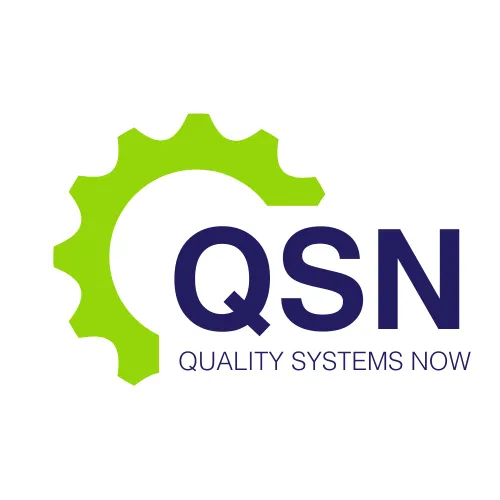LATEST NEWS

Align Training with Your Own SOPs and Site-Specific Workflows
Effective training ensures that personnel can execute their duties consistently, accurately, and in alignment with current Good Manufacturing Practice (GMP) standards. However, generic training modules or externally sourced e-learning packages often fall short when they are not grounded in the site-specific realities of each organisation. At QSN Academy, the dedicated training arm of Quality Systems Now, we advocate for a customised training approach that aligns with your organisation’s Standard Operating Procedures (SOPs) and workflows.
Aligning training content with internal procedures and operational contexts is not merely a best practice—it is a regulatory expectation. This article explores the scientific rationale, regulatory framework, and operational benefits of integrating SOP-based, site-specific training into your compliance strategy.
The Regulatory Imperative for Site-Specific Training
Regulators such as the Therapeutic Goods Administration (TGA), U.S. FDA, and PIC/S expect not just general GMP awareness but clear evidence that personnel are trained to perform their assigned tasks according to site-specific procedures. This is echoed in key regulatory documents:
PIC/S PE009-17, Chapter 2: “Personnel should be aware of the principles of GMP that affect them and receive initial and continuing training, including hygiene instructions, relevant to their needs.”
EU GMP Annex 15: Emphasises the importance of training in relation to specific validation activities and workflows.
FDA 21 CFR Part 211.25: Requires that employees have the “education, training, and experience… to perform their assigned functions.”
Generic training alone cannot meet these expectations. Only SOP-aligned training can ensure that employees are competent not just in theory, but in the actual systems and workflows that underpin product quality and compliance at your site.
Why Generic Training Falls Short
While standard GMP training modules are useful for foundational knowledge, they rarely capture the nuanced, procedural, and technical steps required at the operational level. Some common shortcomings include:
Mismatch between SOPs and training content: Personnel may learn best practices that differ from what is actually practiced on-site, causing confusion or errors.
Lack of procedural context: Employees are taught what to do but not how to do it in your facility, leading to compliance gaps.
Inadequate preparation for audits: Regulators often test training effectiveness by asking personnel to describe how tasks are performed. If responses don’t match current SOPs, findings can be issued.
To mitigate these issues, training must be directly linked to your documented procedures, controlled systems, and facility-specific workflows.
The Benefits of SOP-Aligned Training
Enhanced Procedural Compliance
Training that is tightly coupled with your SOPs ensures that all personnel follow the same documented process, reducing variability and improving consistency. This leads to better process control, reduced deviations, and greater assurance of batch integrity.
Improved Audit Readiness
Trained personnel who can confidently describe how their work aligns with validated procedures are more likely to satisfy auditors. This preparedness not only avoids regulatory findings but demonstrates a mature quality culture.
Better Change Management
When training programs are synchronised with document control systems, changes to SOPs automatically trigger training updates. This ensures that staff are always operating with the most current procedural knowledge and prevents outdated practices from persisting.
Cross-Functional Alignment
Site-specific training improves communication between departments by ensuring that everyone shares a common understanding of procedural interfaces, such as handoffs between Production and Quality Control, or Engineering and Validation.
Building SOP-Aligned Training Programs
Step 1: Map SOPs to Training Roles
Begin by identifying all SOPs relevant to each functional role within your organisation. This mapping process helps determine the training content each staff member needs, including procedure-specific steps and associated forms or system screens.
Step 2: Develop Role-Based Training Matrices
Role-based matrices should detail the SOPs, batch records, protocols, and system instructions relevant to each position. At QSN Academy, we support companies in building matrices that are audit-ready, traceable, and easily updatable.
Step 3: Incorporate Site-Specific Scenarios
Generic training modules are enhanced when they include real-life examples from your site. For instance, a deviation management course becomes more meaningful when it includes an actual deviation report from your facility, with redacted identifiers.
Step 4: Validate Training Effectiveness
Training effectiveness must be measured not just by quiz scores, but by practical assessment. Observation of task execution, use of checklists, and interviews during internal audits are effective ways to confirm that training outcomes match procedural intent.
Step 5: Establish a Continuous Feedback Loop
Training programs should be reviewed periodically to incorporate changes to procedures, equipment, and regulations. Feedback from trainees, supervisors, and QA should be used to continuously improve the quality and relevance of the training content.
Case Study: SOP-Aligned Training in Practice
A mid-sized Australian contract manufacturing organisation (CMO) approached QSN Academy after receiving multiple audit observations related to operator training and SOP compliance. We conducted a gap assessment, mapped all SOPs to functional roles, and designed a blended training package that included:
Classroom sessions on critical GMP principles contextualised to their operations
Procedure walk-throughs on the production floor
SOP-specific assessments and sign-offs
Integration with their Learning Management System (LMS)
As a result, audit observations were reduced by over 80% in the following year, and batch rejection rates also declined due to improved procedural adherence.
Challenges and How to Overcome Them
Limited Training Resources
Smaller companies may lack the instructional design capability to create customised content. QSN Academy offers modular templates, facilitator guides, and eLearning support to address this gap.
Resistance to Change
Shifting from generic to SOP-specific training requires change management. We recommend involving cross-functional stakeholders early in the process and highlighting the regulatory and operational benefits to gain buy-in.
Documentation Complexity
SOPs are often written for compliance, not clarity. Training teams should collaborate with QA to revise procedures where necessary to make them more instructionally effective.
Conclusion
In the world of GMP compliance, the principle that “if it isn’t documented, it didn’t happen” applies equally to training. But documentation alone is not enough. For training to truly support compliance and operational excellence, it must be grounded in the site’s own procedures, workflows, and systems.
At QSN Academy, we are committed to helping therapeutic goods manufacturers, biotechnology companies, and testing laboratories develop training programs that meet regulatory expectations while driving real-world performance. Aligning training with your SOPs is not just a compliance requirement—it’s a strategic investment in the competence, confidence, and capability of your team.
To learn more about how we can help you build SOP-specific training programs that pass audits and improve outcomes, visit qsnacademy.com.au.
